Electric utilities envision an electric vehicle charging future where most charging happens at night, when the sun doesn’t shine. That’s what the data show in a report from the Smart Electric Power Alliance (SEPA)—and the California Energy Commission is singing the same tune.
The SEPA report advises utilities to consider upgrading their distribution networks to accommodate chargers, and to evaluate the best way to earn revenue from them. Utilities, even outside California, have already moved beyond pilot projects in deploying electric vehicle (EV) chargers. SEPA reports that nine utilities are developing EV-specific rates for electricity, called tariffs.
If the solar industry wants a place at the table where EV charging is planned, it may need to elbow its way in.
As the utility trade association Edison Electric Institute sees it, in data shared by SEPA, workplace EV chargers that are suited for daytime charging (shown in light blue below) will be far outnumbered by home EV chargers that would typically be used at night (shown in red):
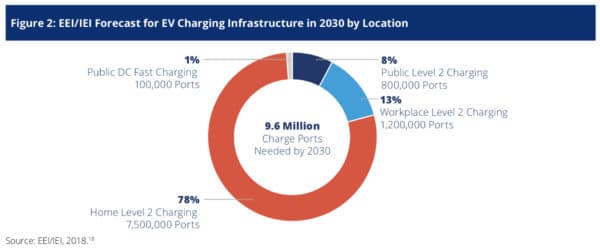
A scenario visualization tool developed by California Energy Commission (CEC) staff and the National Renewable Energy Laboratory (NREL) shows the same result in a different format, as workplace EV charging (in green below) takes a small share of overall California EV charging, in a forecast for 2025 reported by SEPA:
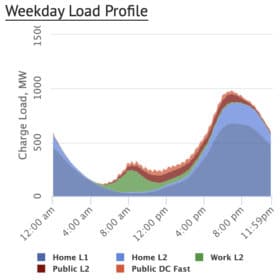
The data in that image, says NREL, reflect assumptions and inputs developed by CEC staff in this report. In a key assumption, CEC assumed that electricity pricing would “follow the relative capital costs for infrastructure installation, where residential charging is cheaper than workplace charging.” That assumption says that workplace charging, even if powered by low-cost solar, would cost more per kilowatt-hour than nighttime residential charging. CEC staff also assumed, said a spokesperson, that EV owners would “prioritize home charging and fast charging over destination charging, including workplaces.” These assumptions, if left unchallenged, could become “baked in” to future studies and plans, disadvantaging both workplace charging and solar power in the EV charging competition.
A sizable opportunity
For those who see opportunities for solar in EV charging, SEPA’s report is somewhat encouraging. First, the cost of battery packs used in EVs has been in freefall, which is driving EV costs down:
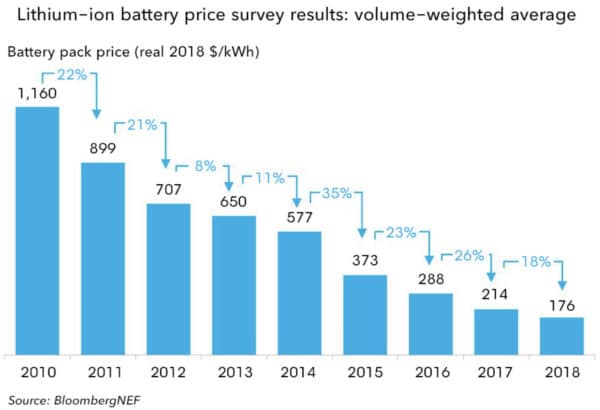
As EV costs fall, more auto makers announce EV models nearing production, and plans for an EV charger buildout are advancing—with Ford announcing a partnership with EV charging companies Greenlots and Electrify America to offer 12,000 charging stations (with 35,000 plugs) nationwide.
And in California, the Low Carbon Fuel Standard “allows EV charging infrastructure owners to earn credits for offsetting gasoline/diesel usage and then trade those credits in a special market to generate extra revenue,” notes SEPA. Looking ahead, SEPA adds, the California Independent System Operator is developing a new tariff that will allow EV charging operators to earn revenue in the wholesale market by increasing load at times of high solar generation.
Go where the EVs will be
Besides the potential to promote workplace EV charging, another opportunity for the solar industry could be to go where the EVs will be. In California, here’s where CEC staff predict EVs will be in 2025, from a full screen shot of the NREL source noted above:
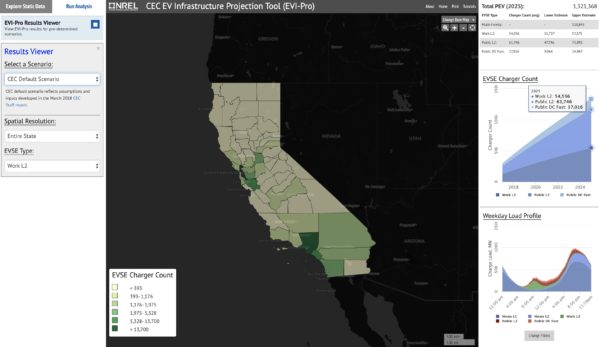
Places where a large number of EVs are found in wide open spaces—as in southeastern California—represent an opportunity for solar farms to power the EVs.
Another opportunity, as suggested by SEPA (and previously in pv magazine), is interstate highway charging plazas “for Class 8 trucks, with multiple chargers that might each provide 1 MW (with provisions for up to 4.5 MW) of DC fast-charging capacity. “ Where interstates pass through rural areas, solar can power the electric trucks.
And on hot summer days, those of us who drive to work would appreciate a solar canopy, which could power some EV chargers as well.
This content is protected by copyright and may not be reused. If you want to cooperate with us and would like to reuse some of our content, please contact: editors@pv-magazine.com.
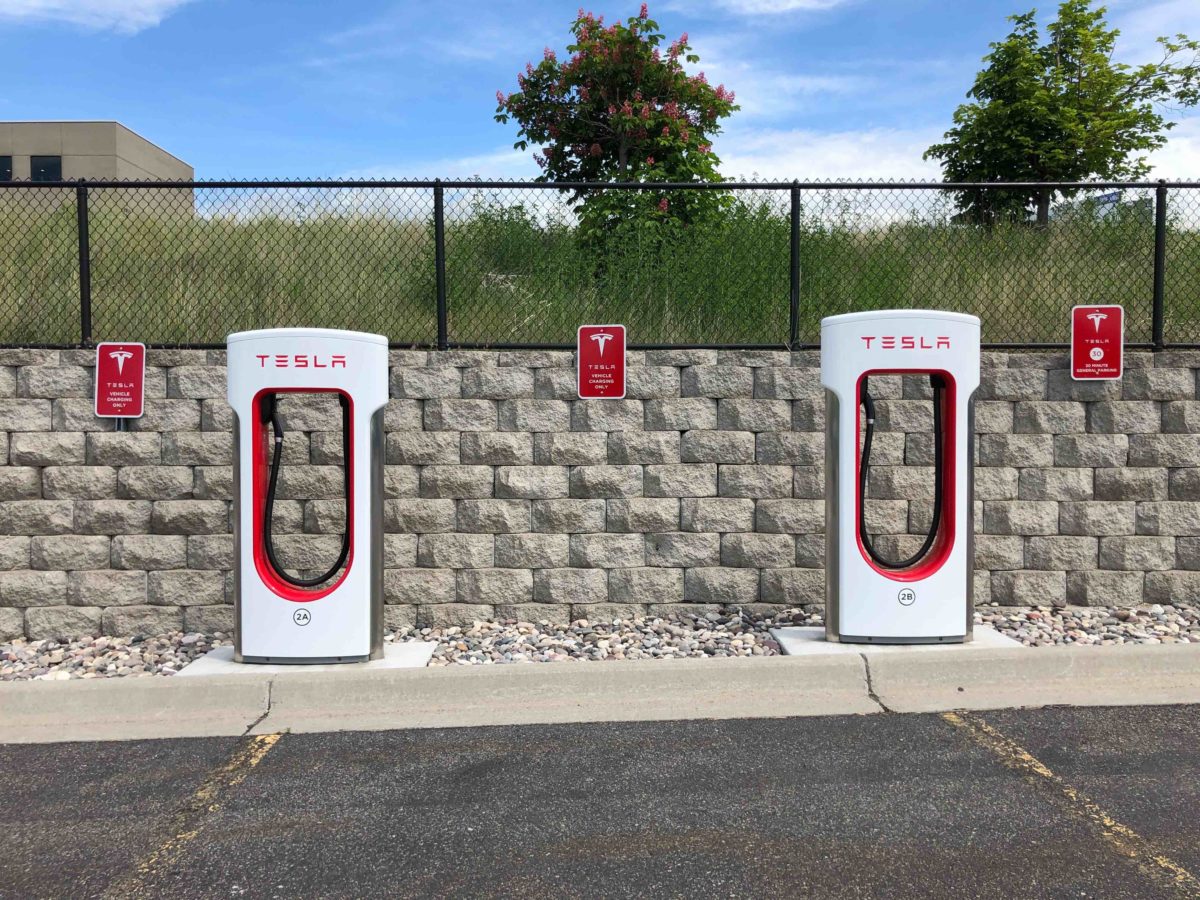
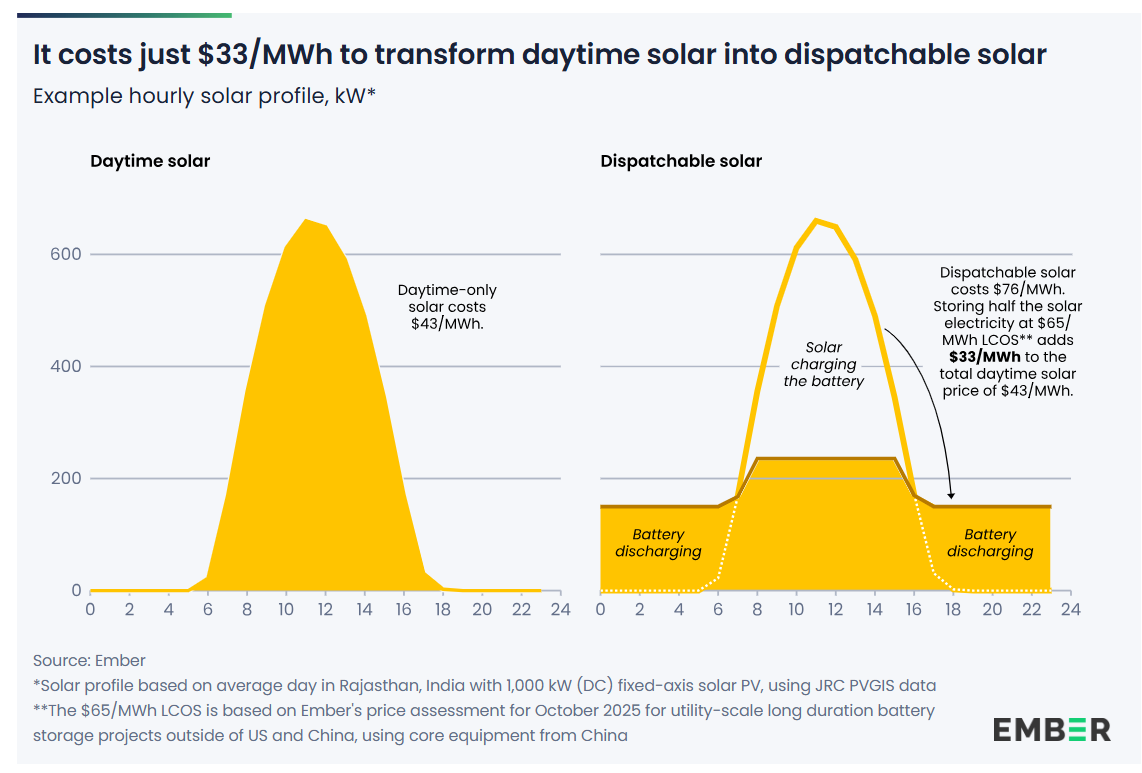




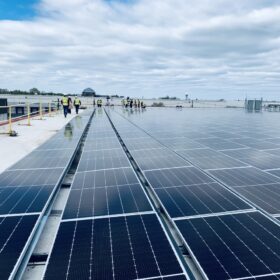

An EV charged by the grid reduces CO2 emissions by 17% over an ICE. A solar charged EV eliminates 100% of the CO2 emissions – 6 times as much as grid charging.